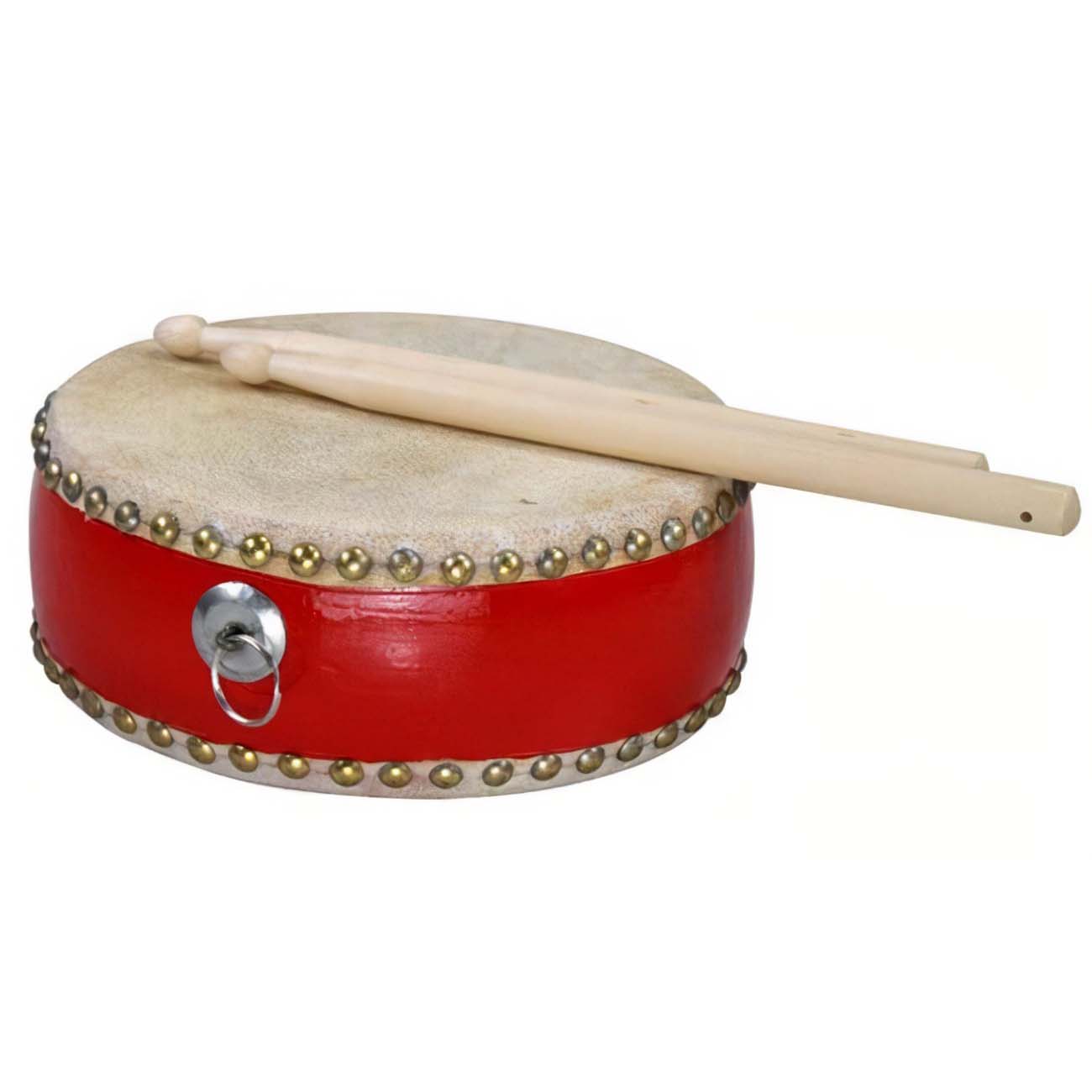biangu overview
 The flat drum (pinyin: Biǎn gǔ) is a percussion instrument, also known as the battle drum. It was used in religious music and folk weddings in the past, and is now used in folk musical ensembles, dances, lantern festivals, acrobatic troupes, and mass gongs and drums. Widely popular in Jilin Yanbian Korean Autonomous Prefecture and other Korean inhabited areas. It is Mongolian, Tibetan, Korean, Manchu, Naxi, Yi, Miao, Han and other ethnic groups who strike the membrane and sound. The flat drum is round, with a wooden frame, covered with sheepskin or cowhide on both sides, and tightened with ropes. The diameter of the drum surface is 37 to 45 cm.
The flat drum (pinyin: Biǎn gǔ) is a percussion instrument, also known as the battle drum. It was used in religious music and folk weddings in the past, and is now used in folk musical ensembles, dances, lantern festivals, acrobatic troupes, and mass gongs and drums. Widely popular in Jilin Yanbian Korean Autonomous Prefecture and other Korean inhabited areas. It is Mongolian, Tibetan, Korean, Manchu, Naxi, Yi, Miao, Han and other ethnic groups who strike the membrane and sound. The flat drum is round, with a wooden frame, covered with sheepskin or cowhide on both sides, and tightened with ropes. The diameter of the drum surface is 37 to 45 cm.The Mongolian language is called Hengelege, the Tibetan language is called E'a, Eqiong, and Dangmuqiong, the Korean and Manchu are called frame drums, the Miao language is called Erduo, and the Han people are called cross drums. Popular in Inner Mongolia, Liaoning, Jilin, Heilongjiang, Tibet, Qinghai, Gansu, Yunnan, Guangxi and northern China.
When playing, the right hand holds a single hammer to strike. The medium-sized flat drum is mostly used in monasteries or Tibetan opera bands in the Kang dialect area. The diameter of the drum surface is about 50 cm, and the height of the drum is about 20 cm. The skin of the drum is mostly made of wild goat skin. The edges of the skin are fixed with iron nails, wooden nails or glue. The skin of the drum is painted with green paint, and the heart of the drum is painted with Buddhist patterns. , exterior painted pattern decoration. Hanging in the wooden frame or between the beams and pillars of the monastery, the performer strikes with a single or double hammer. In Tibetan opera bands, a drummer often plays both drums and cymbals, with a single cymbal in his right hand, and a single cymbal in his left hand. Heart, left hand drumming side, rhythm changeable.
Generally speaking, the flat drum is lower in sound than the tang drum, but very loud, and the flat drum is used for singing and dancing accompaniment or instrumental ensemble, and sometimes it is still dominant in the band.
In the Qing Dynasty, it was used in the court's halogen-bodied music, as many as twenty-four sides. The body of the drum is made of wood, covered with cow, sheep or horse skin on both sides, and the edges of the skin are fixed with two rows of drum nails. The size of the drum varies from 40 cm to 80 cm in diameter, the drum height is 15 cm to 20 cm, and there is a drum ring on each side of the drum body. When playing, percussion with both hands is used in Lamaism activities. In the 1980s, the Chifeng Folk Song and Dance Troupe made high-pitched, alto-bass Hengeleg, which has been used in instrumental ensembles, singing and dancing accompaniment or folk festivals.
- Pinyin:Biǎn gǔ
- nickname:battle drum
- type:percussion
reference materials and contributors
- 扁鼓 · 百度百科
- 扁鼓 · 搜狗百科
- 扁鼓历史与特色简介 民族乐器扁鼓图片及演奏方法介绍 · 乐器资料
overview of other similar instruments
- sanyanxiao overview
- Daguangxian overview
- Leiqin overview
- hahao overview
- yandundagu overview
- Han Xiaozheng overview
- Fang Xiang overview
- guanzi overview
- zhuqin (Dao Qin) overview
- zhuiqin overview
- bangzi overview
- three-stringed piano overview
- Gehu overview
- xiao overview
- xiaokonghou overview
- Konghou overview
- Sheng overview
- suona overview
- hulusi overview
- gushao overview
 渝公网安备 50010702504639号
渝公网安备 50010702504639号